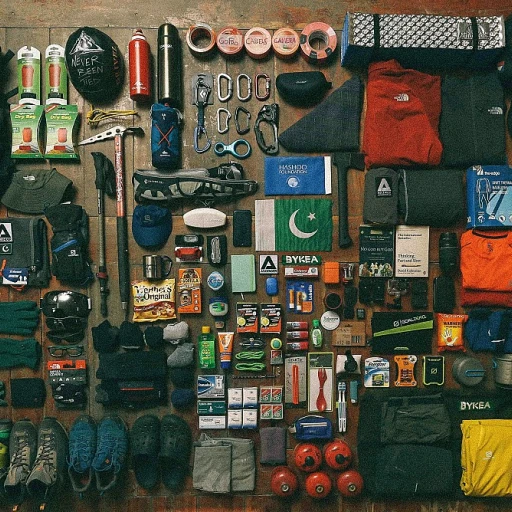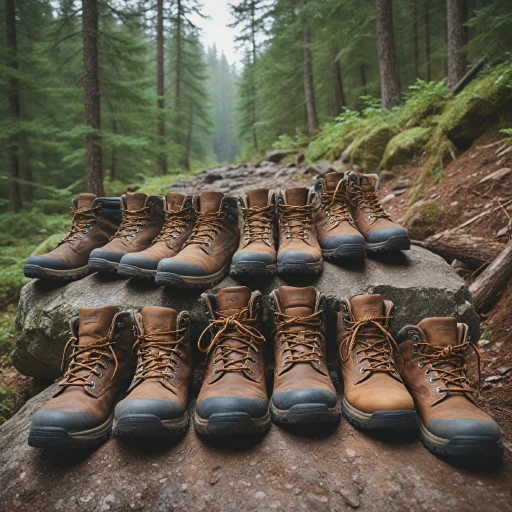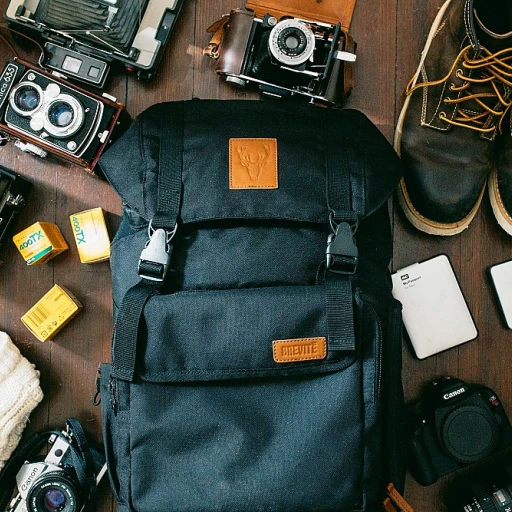
Understanding the Needs of Different Hikers
Tailored Choices for Different Hiking Enthusiasts
When embarking on any hiking journey, the type of hiker you are plays a pivotal role in selecting the ideal backpack for your adventures. Understanding one's needs can make a hike enjoyable and less burdensome.
For backpackers who prioritize weight savings, especially during multi-day trips, choosing the right weight lbs and size becomes crucial. Lightweight packs, like those offered by brands such as Osprey and Gregory, are often favored. These come with internal frame structures to improve balance and stability while minimizing fatigue over extended hikes.
Experienced hikers with specific gear requirements might look into the main compartment capacity ranges, typically in liters, to ensure they can accommodate necessary gear such as a sleeping bag. Opting for a pack with a built-in rain cover provides extra protection against unexpected weather changes.
For those who enjoy hiking with more frequent stops, having easy access to essentials is vital. Hipbelt pockets and strategically placed pockets can make grabbing gear simple. Meanwhile, selecting pack reviews from trusted sources like REI can inform choices regarding comfort features such as hip belts and shoulder straps.
Women-specific backpacks and hiking boots offer unique features, accommodating torso length differences, which can prevent discomfort and enhance the hiking experience. Some manufacturers design their backpacks taking into consideration the anatomical differences, resulting in a more customized fit for women.
From lightweight daypacks to robust backpacking packs, examining individual hiking preferences ensures the chosen gear complements the adventure, whether it’s a short hike or a long backpacking adventure. As every hiking adventure is unique, being equipped with the insights needed for choosing tailored gear makes all the difference in comfort and enjoyment.
Key Features to Look for in Hiking Boots
Essential Features for Every Hiker
When setting out to choose the perfect hiking boots, understanding key features is a game-changer for both newbie adventurers and seasoned mountaineers. Your gear is more than just a functional component; it’s a companion on the trail that affects your overall backpacking experience. Here’s what to consider:
- Weight Considerations: Lightweight boots may allow for greater agility and speed, while sturdier boots could provide extra protection and support. Balancing weight and support is crucial, especially if you’re carrying a substantial backpack filled with essentials.
- Comfort and Fit: The boots must be comfortable and fit your foot shape well. Consider the design, including available women-specific models and features like adjustable designs and supportive hipbelts in backpacks that can relieve pressure.
- Durability for Longevity: Durable materials are non-negotiable if you're trekking through rough terrains. Look for boots with robust construction that’ll hold up across multiple seasons, just like a trusty internal frame backpack can withstand consistently demanding loads.
- Innovative Technologies: Modern hiking boots often incorporate innovative features such as waterproof membranes, breathable fabrics, and advanced sole designs. These technologies enhance comfort and performance, allowing you to better navigate diverse environments.
- Support and Balance: Boots with excellent support systems, similar to the support provided by an ergonomic torso length adjusted backpack, help maintain balance, especially on uneven trails.
Considering these features ensures you select the right footwear for your needs, ensuring a more enjoyable and less strenuous hiking adventure. Whether using your boots with an Osprey or Gregory pack, getting the fit right minimizes the risk of injuries and blisters.
The Importance of Fit and Comfort
Prioritizing Your Comfort and Fit
Finding the right hiking boots is akin to selecting an ideal hiking backpack, like those from renowned brands such as Osprey and Gregory. Just as you would consider factors such as torso length and hipbelt pockets for your pack, attention to comfort and fit in hiking boots cannot be overstated. A snug fit is critical as it impacts how your feet withstand the trail's rigors. Without the correct fit, you might face issues like blisters or discomfort, which can turn your adventurous hike into an unwanted ordeal. Here's what to focus on:- Size Matters: Ensure the boots offer ample space in the toe box. Just like choosing the right size in a backpack, your boots should accommodate your foot length and width comfortably, preventing any toe-pinching during descents.
- Support and Flexibility: The internal frame of a hiking boot should provide stability, similar to the structure a well-fitting backpack adds to your load. It's essential that your boots have a solid arch support, aligning with your foot's natural curve and providing that much-needed balance on uneven terrain.
- Cushioned Interior: Just as a good hiking backpack has padded shoulder straps, your boots should feature a padded collar and tongue. These elements help reduce pressure points, offering a cushioned, comfortable fit.
- Proper Lacing System: Look for boots with a lacing system that securely fastens yet remains easy to adjust. A proper system ensures that your heel stays in place, reducing the chances of heel slippage, much like how the hipbelt stabilizes a loaded pack.
Durability and Longevity
Built to Last: The Longevity of Quality Hiking Boots
When selecting hiking boots, the durability and longevity are crucial attributes that cannot be overlooked. Outdoor enthusiasts and seasoned hikers understand that a boot’s lifespan can significantly impact the success and enjoyment of their backpacking adventures. High-quality hiking boots, such as those from well-regarded brands, are designed to withstand the rigors of diverse terrains and weather conditions. This resilience ensures that you, whether navigating rocky paths or muddy trails, can rely on your footwear to provide consistent support and protection.
To ensure you choose boots with the best durability, consider the following features:
- Material Quality: Full-grain leather and durable synthetic materials are known for their long-lasting properties, offering resistance against wear and tear.
- Construction Techniques: Boots with reinforced stitching and robust lacing systems often exhibit superior durability compared to their counterparts with glued seams or less sturdy fastenings.
- Protective Elements: Features such as reinforced toe caps and tough rubber outsoles extend the life of your hiking boots by adding layers of resistance to abrasions and impacts.
It's also essential to consider how the weight of your pack can affect your boots. Backpackers carrying significant weight, especially in heavier backpacks like those from Osprey or Gregory, need boots that can support the additional strain. This selection not only affects immediate comfort but also plays a role in long-term wear.
Ultimately, investing in boots that offer a balance between comfort, durability, and weight accommodation ensures that your gear doesn't compromise your adventures. When you put on your backpack, whether it's fitted with hipbelt pockets or an internal frame, knowing your boots can take on what's ahead offers peace of mind. For more guidance on gear durability, reviewing pack reviews and talking with other hikers at outdoor retailers like REI can provide valuable insights into making the best choice for your hiking boots.
Innovative Technologies in Hiking Boots
Advanced Features for Modern Hikers
In today’s dynamic hiking scene, innovative technologies in hiking boots aim to enhance your outdoor experience, combining comfort and performance. A key feature is the development of lightweight materials that minimize additional pack weight while maintaining sturdiness. This is essential when you're considering the overall load since your boots become part of the total weight you carry, alongside your hiking backpack.
Furthermore, many manufacturers integrate specialized insoles that cater to different arch types, enhancing comfort throughout long treks. This is especially beneficial for enthusiasts carrying gear-heavy backpacks, such as the Osprey or Gregory models, where each step demands sturdy support.
Waterproof and breathable membrane technologies, such as Gore-Tex, are also pivotal in contemporary designs. They cater to diverse conditions, ensuring dryness without compromising on breathability. Seasoned hikers know how quickly weather can change and how important it is for their hiking boots to adapt just as swiftly as their pack layers.
Innovations also extend to the soles of the boots, with advanced traction systems designed to provide grip on varied surfaces. For those conquering challenging terrains, the boots' connection to internal frames in backpacks can significantly impact stability and balance.
As you review the myriad options available, considering such modern features in hiking boots can substantially enhance your hiking trips, making each journey more comfortable and enjoyable. Align your choices with gear like the Granite Gear packs or the women-specific models, ensuring that from your shoes to your backpack, every element offers maximum efficiency.
Tips for Maintaining Your Hiking Boots
Preserving Your Investment in Footwear
Ensuring the longevity of your hiking boots is key to getting the most out of your adventures, whether you're tackling a light stroll or embarking on more demanding backpacking excursions. Hiking boots endure various terrains, weather conditions, and weights, especially when considering the load carried in backpacks from brands like Osprey or Gregory.- Regular Cleaning: After each hike, remove dirt and mud that can degrade materials over time. Use a soft brush and water for a light cleanse and ensure they dry thoroughly to avoid developing odors.
- Waterproofing: Many hiking boots come with built-in water resistance, but regular applications of a waterproofing spray can reinforce this barrier. This is essential for those unpredictable rain cover moments when weather fabric gives in unexpectedly.
- Drying Techniques: Never dry boots with direct heat sources like radiators since they can damage the materials. Instead, opt for air drying, and for quicker results, stuff them with newspaper to absorb excess moisture.
- Proper Storage: Store boots in a cool, dry place with no weight on top to maintain their structural integrity, much like ensuring the torso length adjustments of your pack remain intact.
- Routinely Check & Replace Insoles: The insoles can wear out faster than the outer structure, impacting comfort and fit. Utilizing a good quality insole can also influence how you manage the load of your backpacking packs.
- Inspect for Wear and Tear: Regularly check your boots for any signs of damage or wear in the outsoles, uppers, and seams. Addressing these promptly can prevent potential issues during a hiking backpack adventure.














